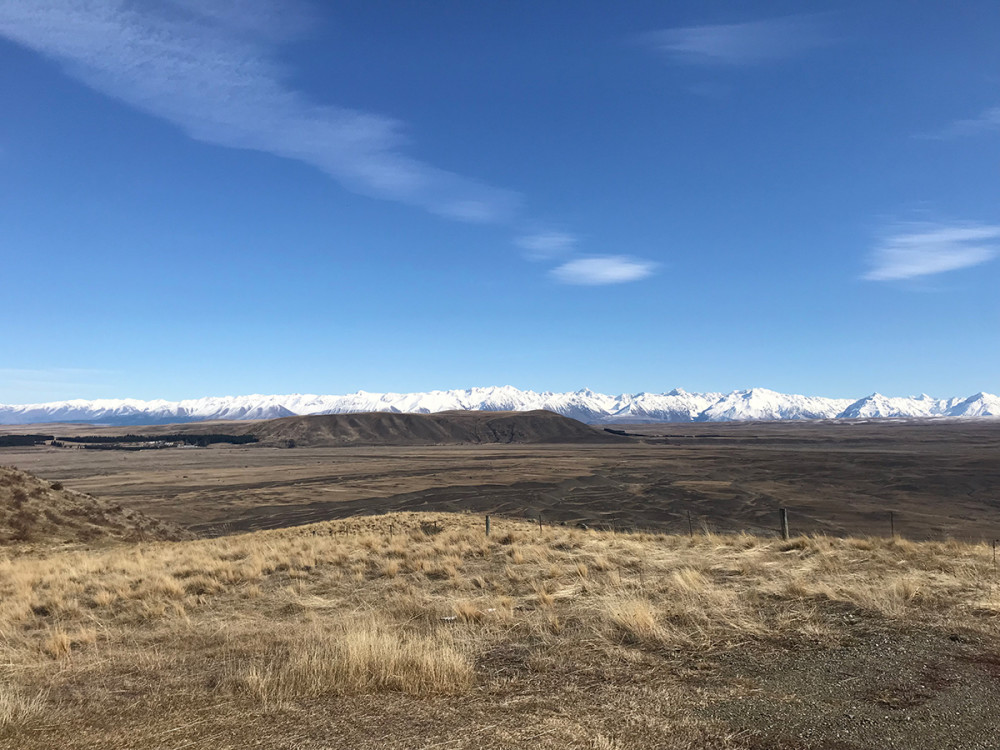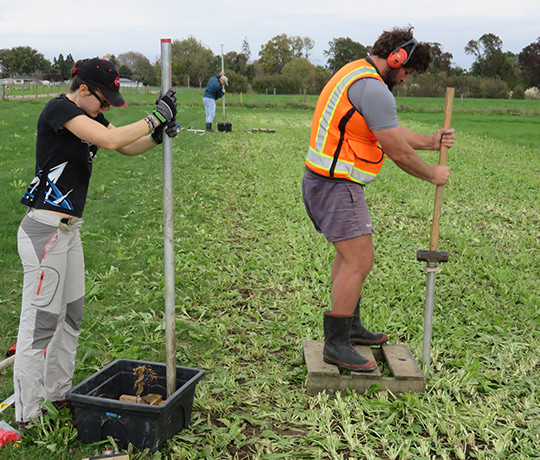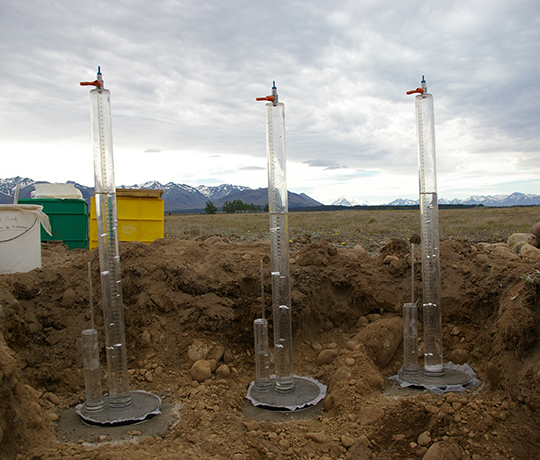The state of New Zealand soils
'I know that New Zealanders care about our land, and I am confident that together we can tackle the issues.'
Penny Nelson (MfE), while introducing the 'Our Land 2018' report

Declining soil quality
We are losing 192 million tonnes of soil a year. That’s the equivalent of four-hundred-thousand dump trucks of soil unloaded every week.
The idea that ‘what we cannot see cannot hurt us’ could not be more wrong in the context of New Zealand soils.
Soils provide several key services, most importantly growing our food, water drainage, storage and filtering, carbon and nutrient storage and recycling, and hosting a large part of our biodiversity. In New Zealand we rely heavily on soils for our economy, as soil provides the resources for primary production such as dairy, horticultural crops and wood. New Zealand landscapes that attract millions of tourists every year are also underpinned by soil.
It is therefore hugely important that we manage our soils well to sustain services and production from the soil. Soils develop over long time frames – millennia or longer – but can be lost very quickly through mismanagement and natural events.
Pressures on NZ soils, and their drivers
New Zealand soils have some specific challenges, due to both the natural environment and historical management. The table below, adapted from the Our Land 2018 report by the Ministry for the Environment (MfE) and Statistics NZ, shows the most important pressures on our soils, the impacts, and where these pressures are an issue:
|
Soil pressure |
Natural or human-influenced |
Description |
Potential impacts on soil |
Where it is an issue |
|
Earthquakes and landslides |
Natural, although the rate of landslides is highly influenced by human land use, topography and geology. |
Landslides triggered by rain and earthquakes are a leading contributor to erosion in New Zealand. |
Increased erosion Loss of topsoil and reduction in productivity |
Widespread – steep terrain is commonly prone to erosion in the form of landslides. |
|
Intense rainfall events |
Natural, but human-induced climate change is increasing the frequency of intense rainfall events. |
Intense rain and wind contribute to erosion. While this is part of natural processes, rates of erosion are increased in extreme weather events, particularly in the absence of a complete vegetative cover. |
Increased erosion Loss of topsoil and reduction in productivity |
Widespread, but primarily in the Southern Alps and in North Island hill country formed on weak rock types. This is of particular concern in areas such as Northland and the east coast of the North Island. |
|
Reduction in vegetation cover |
Largely human-influenced, but some natural |
Accelerated erosion can be caused by clearing native vegetation for farming or forestry, forestry harvesting, changing from forestry to pastoral farming, cultivation and harvesting of crops, and the effect of pests (e.g. rabbits) and plant diseases. |
Increased erosion Loss of topsoil and reduction in productivity Loss of soil biodiversity Loss of soil nutrients (changed nutrient cycling) |
Widespread, but hill country formed on weak rock types is particularly susceptible. |
|
Agricultural intensification |
Human-influenced |
Increased production per area of land, often achieved through increased inputs (e.g. fertiliser, pesticides, water, and supplementary feed), and higher stocking rates |
Increased erosion Degradation of soil and water quality Loss of soil biodiversity |
Widespread, but especially true for intensive farming areas on flat to rolling land. |
|
Urban expansion |
Human-influenced |
A switch from undeveloped or rural land to urban land use leads to the loss of soil for future use. This is of particular concern for high-class soil. |
Decreased availability of high-class soil Loss of soil biodiversity |
Auckland, Waikato, Tasman, Canterbury, Tauranga |
|
Pollution and waste disposal |
Human-influenced |
A variety of industrial, commercial, domestic and agricultural activities can result in chemical and physical contamination of soil. Historical activities can leave legacy issues of soil contamination. |
Degradation of soil quality and reduction in productivity Loss of soil biodiversity |
Widespread but usually in hotspots (e.g. landfills, mining areas, and former sheep-dip facilities).
|
Based on the soil quality monitoring results of 11 regions in New Zealand, the state of our productive soils is within the target for most measured indicators. However, specific challenges for New Zealand soils are erosion, phosphorus levels (nutrient imbalances) and macroporosity (soil compaction).
Let us look at these challenges in more detail:
New Zealand soils are naturally highly susceptible to erosion. Two areas with the highest erosion rates are the Gisborne region in the North Island and the West Coast in the South Island. The Gisborne region has slopes with geology and related soils that are naturally highly erodible, and this natural erosion is made worse through the historical clearance of forest. On the West Coast, steep mountainous terrain in combination with high rainfall is the main cause of high erosion rates.
However, an estimated 44% of soil loss in New Zealand due to erosion - approx. 84 million tonnes per year - comes from pasture (exotic grassland), indicating that some intensive farming practices may cause considerable soil loss. Given that many New Zealand regions are naturally susceptible to erosion, intensive agriculture has to be managed cautiously to minimise the losses of valuable soil.
Phosphorus is an important nutrient for plant growth, and it is often provided as fertiliser to crops and pastures. Many New Zealand soils have low natural levels of phosphorus, or have become depleted in phosphorus levels due to growing and harvesting of crops. Low levels of phosphorus may cause lower crop yield and productivity. However, a third of soils in New Zealand have too-high phosphorus levels due to (over)supply of fertilisers, and this can cause problems: erosion and run-off of phosphorus into waterways increases the risk of poor water quality and toxic algae.
Cultivation, grazing, and forestry operations when soils are wet causes compaction, deformation, and consolidation of the topsoil and upper subsoil. This gives rise to a rapid and marked loss of soil structure and a reduction in soil permeability and aeration. Some soils are more at risk than others due to their poor resistance and resilience to compacting forces, poor drainage, limited water-holding capacity, or higher rainfall.
Macroporosity is a measure of how many large pore spaces (macropores) exist in a soil. Macropores contain either water or air. Low macroporosity indicates that soil is compacted; for example, due to heavy machine traffic or high animal stocking rates. Soil with low macroporosity is less productive because it reduces plant growth, restricts the soil drainage of excess water, and reduces soil biodiversity.
Low macroporosity also increases erosion and phosphorus run-off, because water cannot infiltrate into the soil, and so it contributes to poor water quality. Nearly half of New Zealand soils tested for macroporosity (mostly productive land) have levels that are too low, which means they are less productive than they could be and are likely to contribute to erosion and nutrient run-off.

